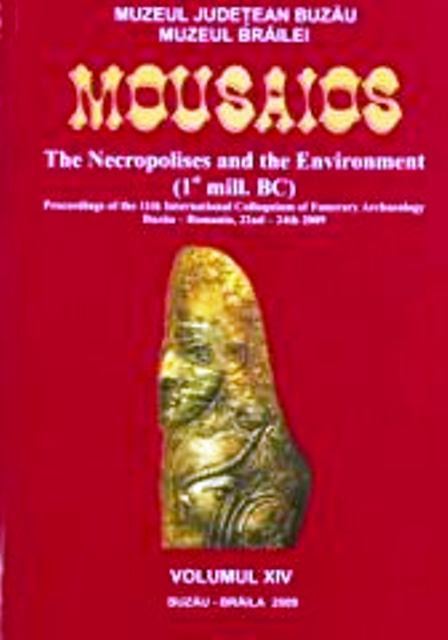Habitation structures and funerary discoveries in the Buzau sub-Carpathians area, in the 8th-3rd centuries BC
Habitation structures and funerary discoveries in the Buzau sub-Carpathians area, in the 8th-3rd centuries BC
Author(s): Sebastian MateiSubject(s): Archaeology
Published by: Muzeul Judetean Buzău
Keywords: graves; settlements; Sub-Carpathians; rituals; inventory
Summary/Abstract: The geographical space considered in this study represents an important component in the morphology of the Curved Carpathians’ area, being the shortest connection between the Lower Danube plains and Transylvania. This individual geographic context resulted in the end, in shaping an exceptionally culturally dynamic region. For the period beginning with the 8th century BC, certain Basarabi finds were discovered in the sites of Berca, Cârlomăne ti and Pietrosu, indicating a short time habitation. Not far from these sites, at Izvorul Dulce, an incineration grave dated around 700 BC was discovered. For the 6th-5th centuries BC period, both the funerary discoveries and settlements increase in number. We mention 4 graves: Năeni – Colarea, Năeni – Zănoaga, Valea Viei and Gherăseni. One may notice as an exceptional find, the funerary inventory of the Năeni-Colarea grave, containing 3 wheel-made ceramic vessels (lekanae, bowl and mug) and an iron sword (akinakes type). This grave was found in the vicinity of a contemporaneous fortified settlement, site which hasn’t yet been excavated. Likewise, not far from the Valea Viei grave, two settlements dated in the 6th-5th centuries BC, at Sibiciu de Sus and Mlăjet were archaeologically documented. In the 4th-3rd centuries BC the number of known and researched settlements grows noticeably. However, we do not have yet, a single contemporaneous funerary discovery. This situation is the result of the present state of research, as necropolises must have existed in the nearby of the important settlements from Oratia, Petri oru or Pietroasa Mică. From the 2nd century BC the number of settlements grows significantly, being accompanied after the 2nd century AD by funerary discoveries. The demographic decrease in the Curved Area of the Carpathians’ during the 12th -2nd centuries BC, considered in contrast with the younger and latter periods, cannot be, by no means, justified as a result of the lack of archaeological research, but more probably due to a series of cultural and habitation changes.
Journal: Mousaios
- Issue Year: 2009
- Issue No: 14
- Page Range: 103-120
- Page Count: 18
- Language: English

